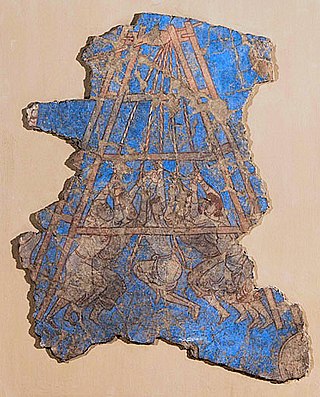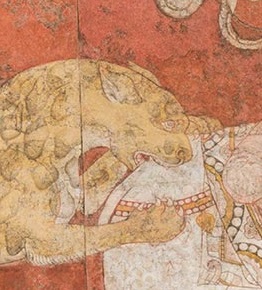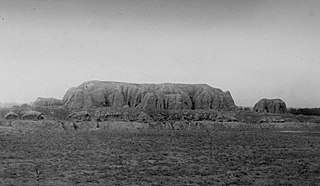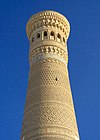The Uzbeks are a Turkic ethnic group native to the wider Central Asian region, being among the largest Turkic ethnic groups in the area. They comprise the majority population of Uzbekistan, next to Kazakh and Karakalpak minorities, and also form minority groups in Afghanistan, Tajikistan, Kyrgyzstan, Kazakhstan, Turkmenistan, Russia, and China. Uzbek diaspora communities also exist in Turkey, Saudi Arabia, United States, Ukraine, Pakistan, and other countries.

Sogdia or Sogdiana was an ancient Iranian civilization between the Amu Darya and the Syr Darya, and in present-day Uzbekistan, Turkmenistan, Tajikistan, Kazakhstan, and Kyrgyzstan. Sogdiana was also a province of the Achaemenid Empire, and listed on the Behistun Inscription of Darius the Great. Sogdiana was first conquered by Cyrus the Great, the founder of the Achaemenid Empire, and then was annexed by the Macedonian ruler Alexander the Great in 328 BC. It would continue to change hands under the Seleucid Empire, the Greco-Bactrian Kingdom, the Kushan Empire, the Sasanian Empire, the Hephthalite Empire, the Western Turkic Khaganate and the Muslim conquest of Transoxiana.
The Hephthalites, sometimes called the White Huns, were a people who lived in Central Asia during the 5th to 8th centuries CE, part of the larger group of the Iranian Huns. They formed an empire, the Imperial Hephthalites, and were militarily important from 450 CE, when they defeated the Kidarites, to 560 CE, when combined forces from the First Turkic Khaganate and the Sasanian Empire defeated them. After 560 CE, they established "principalities" in the area of Tokharistan, under the suzerainty of the Western Turks and of the Sasanian Empire, before the Tokhara Yabghus took over in 625.

The Buddhas of Bamiyan were two possibly 6th-century monumental Buddhist statues in the Bamiyan Valley of Afghanistan. Located 130 kilometres (81 mi) to the northwest of Kabul, at an elevation of 2,500 metres (8,200 ft), carbon dating of the structural components of the Buddhas has determined that the smaller 38 m (125 ft) "Eastern Buddha" was built around 570 CE, and the larger 55 m (180 ft) "Western Buddha" was built around 618 CE, which would date both to the time when the Hephthalites ruled the region. As a UNESCO World Heritage Site of historical Afghan Buddhism, it was a holy site for Buddhists on the Silk Road. However, in March 2001, both statues were destroyed by the Taliban following an order given on February 26, 2001, by Taliban leader Mullah Muhammad Omar, to destroy all the statues in Afghanistan "so that no one can worship or respect them in the future". International and local opinion condemned the destruction of the Buddhas.

Panjakent or Penjikent is a city in the Sughd province of Tajikistan on the river Zeravshan, with a population of 52,500. It was once an ancient town in Sogdiana. The ruins of the old town are on the outskirts of the modern city. The Sarazm Important Bird Area lies downstream of the city on the tugay-vegetated floodplain of the river.
The Sogdian language was an Eastern Iranian language spoken mainly in the Central Asian region of Sogdia, located in modern-day Uzbekistan, Tajikistan, Kazakhstan and Kyrgyzstan; it was also spoken by some Sogdian immigrant communities in ancient China. Sogdian is one of the most important Middle Iranian languages, along with Bactrian, Khotanese Saka, Middle Persian, and Parthian. It possesses a large literary corpus.
Boris Ilich Marshak was an archeologist who spent more than fifty years excavating the Sogdian ruins at Panjakent, Tajikistan.

Osrušana or Ustrushana was a former Iranian region in Transoxiana, home to the Principality of Ushrusana, an important pre-Islamic polity of Central Asia. Oshrusana lay to the south of the great, southernmost bend of the Syr Darya and extended roughly from Samarkand to Khujand. The capital city of Oshrusana was Bunjikat. The exact form of the Iranian name Osrušana is not clear from the sources, but the forms given in Hudud al-'alam, indicate an original *Sorušna.

The Orlat plaques are a series of bone plaques that were discovered in the mid-1980s in Uzbekistan. They were found during excavations led by Galina Pugachenkova at the cemetery of Orlat, by the bank of the Saganak River, immediately north of Samarkand. Pugachenkova published her finds in 1989. The left half is decorated with an elaborated battle scene, while on the other side is depicted a hunting scene.

The Afrasiab murals, also called the Paintings of the Ambassadors, is a rare example of Sogdian art. It was discovered in 1965 when the local authorities decided to construct a road in the middle of Afrāsiāb mound, the old site of pre-Mongol Samarkand. It is now preserved in a special museum on the Afrāsiāb mound.

Byzantine silk is silk woven in the Byzantine Empire (Byzantium) from about the fourth century until the Fall of Constantinople in 1453.

The Muslim conquest of Transoxiana, also called the Arab conquest of Transoxiana, was part of the early Muslim conquests. It began shortly after the Muslim conquest of Persia enabled the Arabs to enter Central Asia. Relatively small-scale incursions had taken place under the Rashidun Caliphate, but it was not until after the establishment of the Umayyad Caliphate that an organized military effort was made to conquer Transoxiana, a region that today includes all or parts of Uzbekistan, Tajikistan, Kazakhstan, and Kyrgyzstan. The campaign continued under the Abbasid Caliphate, and gradually saw the Islamization of the region.

Central Asian art is visual art created in Central Asia, in areas corresponding to modern Kyrgyzstan, Kazakhstan, Uzbekistan, Turkmenistan, Tajikistan, Afghanistan, and parts of modern Mongolia, China and Russia. The art of ancient and medieval Central Asia reflects the rich history of this vast area, home to a huge variety of peoples, religions and ways of life. The artistic remains of the region show a remarkable combinations of influences that exemplify the multicultural nature of Central Asian society. The Silk Road transmission of art, Scythian art, Greco-Buddhist art, Serindian art and more recently Persianate culture, are all part of this complicated history.

Kara Tepe is a Buddhist archaeological site in the Central Asia region of Bactria, in the Termez oasis near the city of Termez in southern Uzbekistan. The foundations of the site date to the 1st century CE, with a peak of activity around the 3rd and 4th centuries during the Kushan period, before experiencing a fatal decline around the 5th century CE, probably with the invasion of the Kushano-Sassanian, whose coinage can be found on the site.

Sogdian art refers to art produced by the Sogdians, an Iranian people living mainly in ancient Sogdia, present-day Uzbekistan, Tajikistan, Kazakhstan, and Kyrgyzstan, who also had a large diaspora living in China. Its apex was between the 5th and 9th centuries, and it consists of a rich body of pre-Muslim Central Asian visual arts. New finds recovered in the past decades allowed scholars to achieve a better understanding of Sogdian art.

Balalyk tepe, in former Bactria, modern Uzbekistan, is a Central Asian archaeological site with many mural paintings. It was the site of a small fortified manor belonging to a princely Hephthalite clan. It is generally dated a bit later than the painting at Dilberjin, from the late 5th century to the early 7th century CE, or from the end of the 6th century to the early 7th century CE. The paintings of Balalyk Tepe are part of a "Tokharistan school", which also includes Adzhina-tepe and Kafyr-kala. They are succeeded chronologically by the Sogdian art of Penjikent.

Kafir-kala is an ancient fortress 12 kilometers south of the city center of Samarkand in Uzbekistan, protecting the southern border of the Samarkand oasis. It consists in a central citadel built in mud-bricks and measuring 75 × 75 meters at its base has six towers and is surrounded by a moat, still visible today. Living quarters were located outside the citadel.

Varkhuman, also Vargoman was an Ikhshid (King) of Sogdia, residing in the city of Samarkand in the 7th century CE. He succeeded King Shishpin. He is known from the Afrasiab murals of Afrasiyab in Samarkand, where he is seen being visited by embassies from numerous countries, including China. There is also an inscription in the murals directly mentioning him. His name is also known from Chinese histories.

The murals of Penjikent are among the most famous murals of the pre-Islamic period in Panjakent, ancient Sogdiana, in Tajikistan. Numerous murals were recovered from the site, and many of them are now on display in the Hermitage Museum in Saint Petersburg, and in the National Museum of Antiquities of Tajikistan in Dushanbe. The murals reveal the cosmopolitan nature of the Penjikent society that was mainly composed of Sogdian and Turkic elites and likely other foreign merchant groups of heterogeneous origin. Significant similarities with Old Turkic clothing, weapon items, hairstyles and ritual cups are noted by comparative research.

Tūrgār, also Thurgar was a medieval Sogdian ruler in Transoxiana and successor to his father Ghurak during the period of the Muslim conquest of Transoxiana. He was the last ruler of Samarkand and its surroundings from ca. 738 until no later than 755/57, until the Arabs took full control of the region. He was an Ikhshid, a princely title of the Iranian rulers of Soghdia and the Ferghana Valley in Transoxiana during the pre-Islamic and early Islamic periods.























